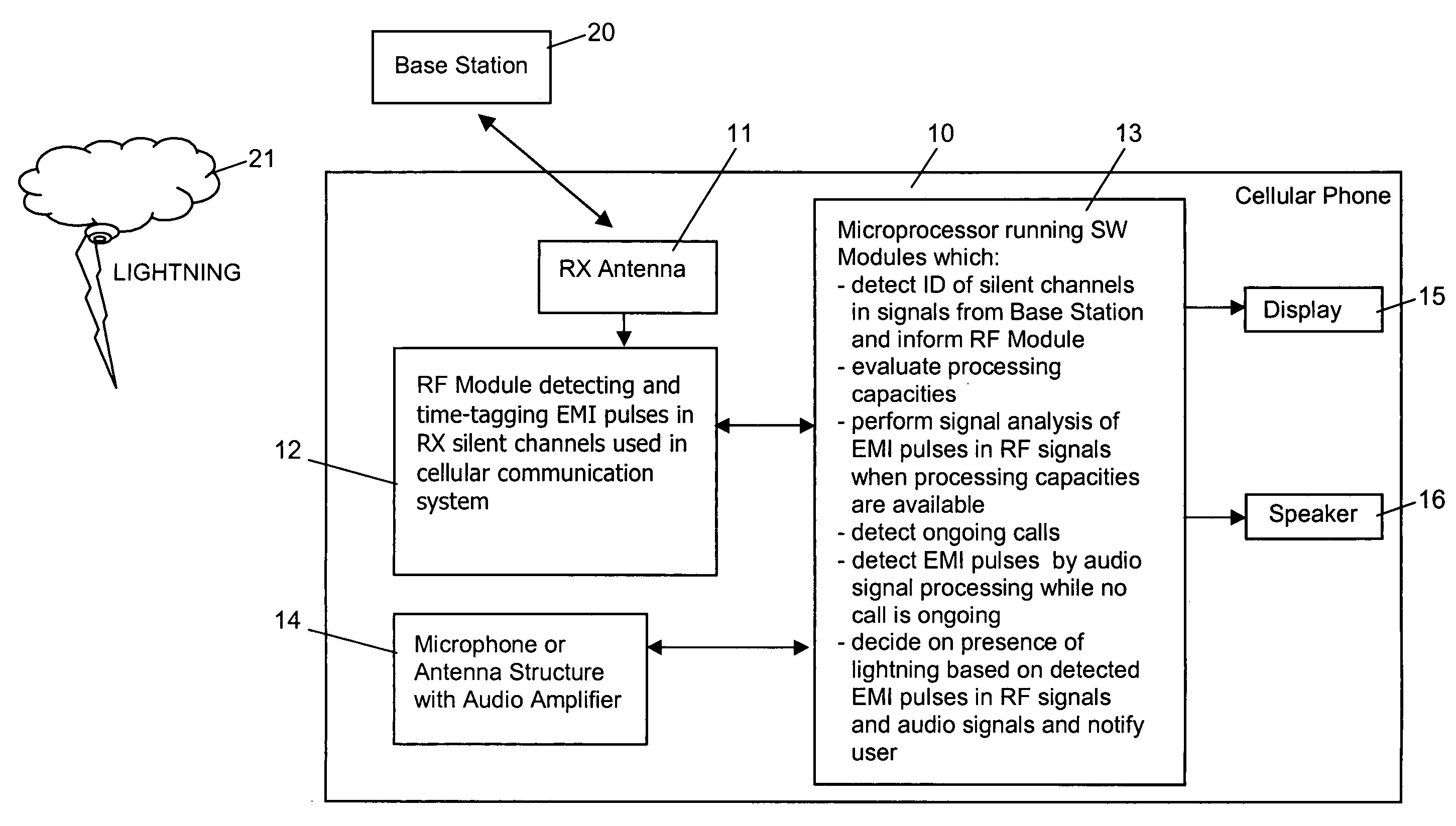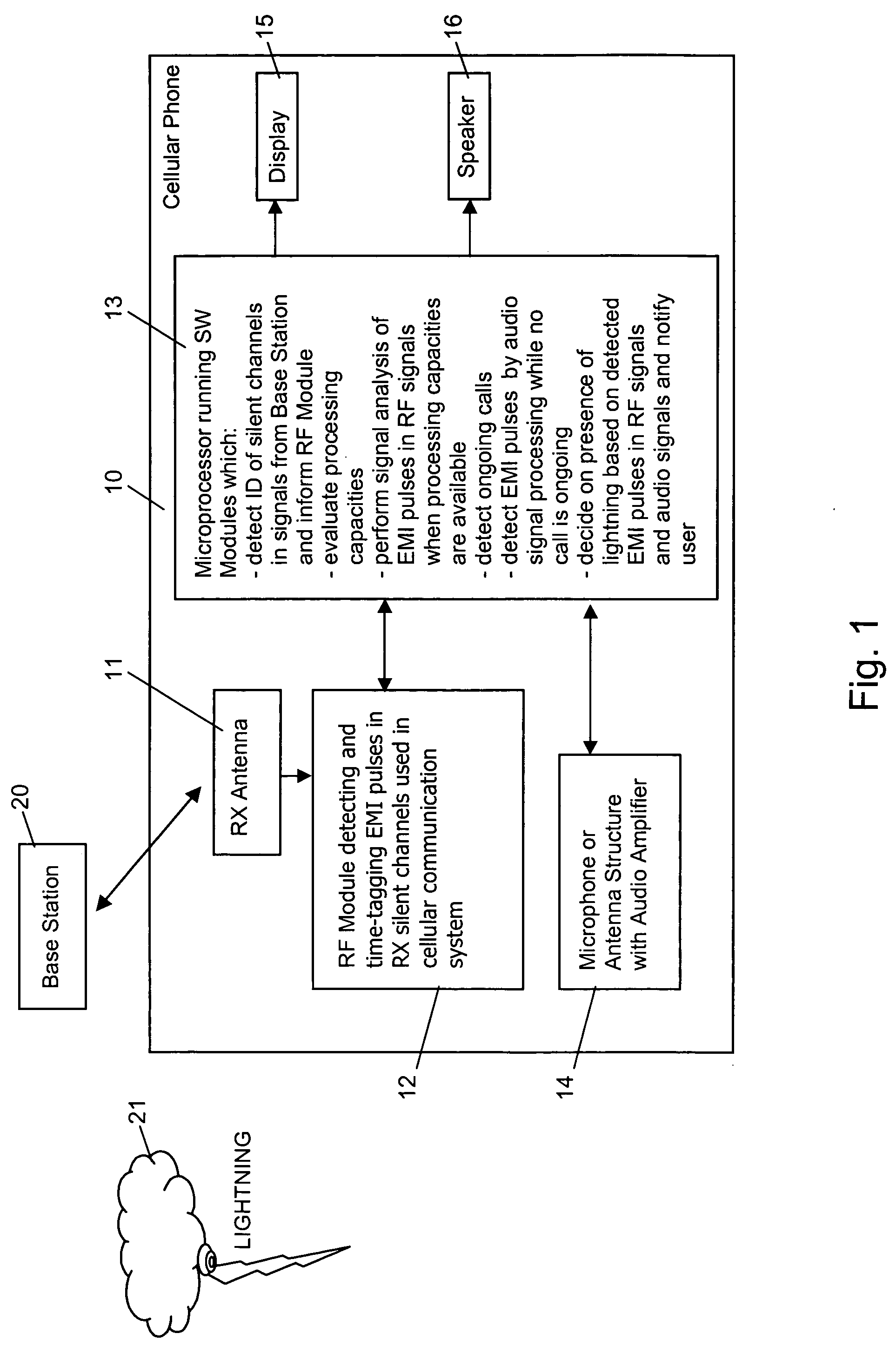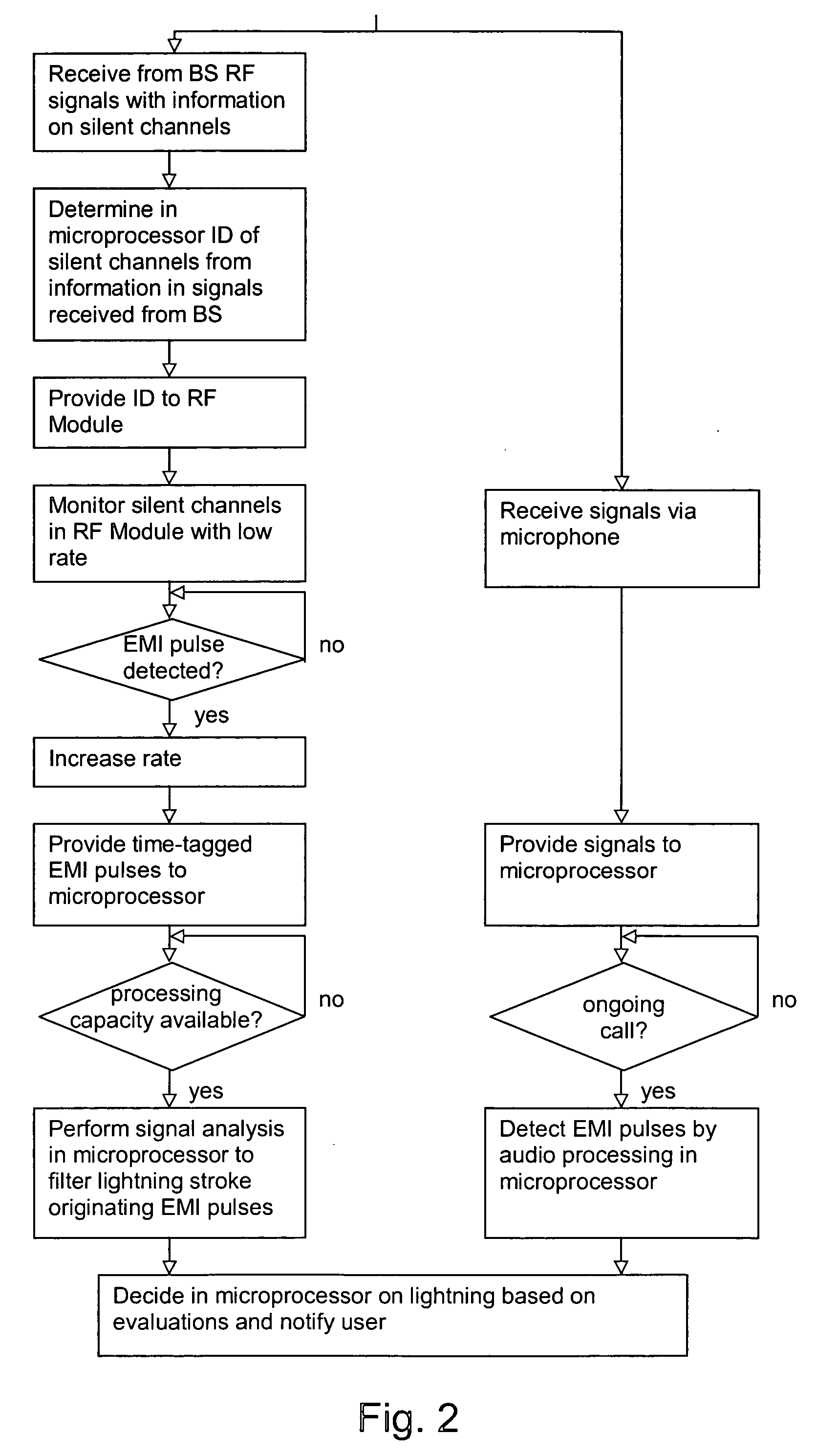Detection of lightning
a technology of lightning stroke and detection method, which is applied in the field of detecting lightning stroke, can solve the problems of difficult prediction, most dangerous lightning stroke, and major weather hazards, and achieve the effects of low extra cost, cost saving and small extra siz
- Summary
- Abstract
- Description
- Claims
- Application Information
AI Technical Summary
Benefits of technology
Problems solved by technology
Method used
Image
Examples
first embodiment
[0065]FIG. 1 is a schematic block diagram of a cellular communication system in accordance with the invention enabling a lightning alert. The system can be for example a GSM system.
[0066] The cellular communication system comprises a cellular phone 10 and a base station 20 of a cellular communication network.
[0067] The cellular phone 10 comprises a receiving RX antenna 11, which is connected via an RF module 12 to a microprocessor 13. The cellular phone 10 moreover comprises a microphone circuitry 14, which is equally connected to the microprocessor 13. Alternatively to the microphone structure 14, a specific antenna structure connected to an audio amplifier 14 may be employed. The microprocessor 13 is further connected to a display 15 and / or a speaker 16 of the cellular phone 10. In addition, the cellular phone 10 may comprise any other component known to be comprised in conventional cellular phones.
[0068] A lightning stroke 21 occurring in the vicinity of the cellular phone 10 i...
second embodiment
[0077]FIG. 3 is a schematic block diagram of an AM / FM radio apparatus 30 in accordance with the invention enabling a lightning alert.
[0078] The AM / FM radio apparatus 30, which may be implemented in some other device like a cellular phone, comprises at least one AM radio path and at least one FM radio path.
[0079] The radio apparatus 30 proceeds from a conventional AM / FM radio apparatus. It comprises a conventional AM / FM chip 31 including an AM front-end 32 and an FM front-end 33, the latter being connected within the chip to an FM limiter 34. The AM signal output by the chip 31 is used for a conventional presentation to a user. The FM signal provided by the FM limiter 34 and output by the chip 31 is equally used for a conventional presentation to a user. The FM limiter 34 is connected in addition to ground GND.
[0080] For the second embodiment of the invention, a first inductive loop 41 sensitive in the MHz range is located next to the output of the chip 31 for the AM signal. The fi...
third embodiment
[0096]FIG. 5 is a schematic block diagram of a cellular communication system in accordance with the invention enabling a lightning alert. The system can be for example a GSM system.
[0097] The cellular communication system comprises a cellular phone 50 and a base station 60 of a cellular communication network.
[0098] The cellular phone 50 comprises an RF antenna 51, which is connected via an EMI detector 52 to a processing component 53. The processing component 53 is realized in hardware and / or software. The cellular phone 50 comprises in addition a microphone 54, which is connected via a multiband envelope detector 55, a multichannel matched filter component 56 and a combiner 57 to the processing component 53. The EMI detector 52 has moreover a controlling access to the matched filter component 56. The processing component 53, finally, is further connected to a display 58 and a speaker 59 of the cellular phone 50.
[0099] The operation of the system of FIG. 5 will now be explained wi...
PUM
 Login to View More
Login to View More Abstract
Description
Claims
Application Information
 Login to View More
Login to View More - R&D
- Intellectual Property
- Life Sciences
- Materials
- Tech Scout
- Unparalleled Data Quality
- Higher Quality Content
- 60% Fewer Hallucinations
Browse by: Latest US Patents, China's latest patents, Technical Efficacy Thesaurus, Application Domain, Technology Topic, Popular Technical Reports.
© 2025 PatSnap. All rights reserved.Legal|Privacy policy|Modern Slavery Act Transparency Statement|Sitemap|About US| Contact US: help@patsnap.com



